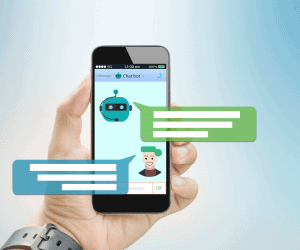Hands up if you have done a customer service course over the past 20 years, keep your hand up if you’ve done between 2 and 5, keep them up if you’ve done more than 5.

In a lot of rooms, that’s still a lot of hands up. Despite ongoing investments in customer service training by some very talented outsourced trainers, coupled with internal daily, weekly, monthly efforts; how often does your company’s customer service fall over in terms of delivering consistently?
When we talk about Customer Service, we are really only talking about one aspect of the customers experience. It is one of the more important, and one where the Operations teams have a direct input into affecting how the customer experiences the brand; however it isn’t an all-encompassing term.
Customer service is largely the human element in your customer’s journey with your brand and that can be interrupted by any number of issues. Patience, product knowledge, dispute resolution, coupled with and rapport building all have a direct input on how satisfied a customer will be at the end of their interaction and or transaction.
Customer Experience, however, involves all the ways your brand interacts with your customer. It involves a more holistic approach from the moment the customer first see’s your brand, through each step of the buying cycle. The interactions with the numerous touch points across both the virtual and physical world, I believe, open a world of possibilities for your brand.
By clearly identifying the customer’s journey, and how each part of that journey is impacted by every stake holder in your business, you get the opportunity to design a path that elevates what success looks like from the ground up.
By bringing together Customer Service, IT, Operations, Logistics, Marketing, and Leadership under the umbrella of CX, with KPI’s that are aligned and focused on the customers experience, your business can truly distinguish itself in the market. Given how easily silo’s form in any company, this process of breaking them down needs to be the starting point in your journey mapping exercise.
It isn’t a one fit solution for every company, and requires a 6 step process that will necessitate buy in and accountability from every one of those aforementioned stake holders. I see it as both a top down, and bottom up approach. There needs to be alignment so the floor team recognises what matters, and the leadership focuses on these strategically set and agreed to KPI’s. Everyone understands each touch point and how they impact them and what is expected by them to consistently delight.
This isn’t pie in the sky stuff and businesses that are recognizing the importance of customer engagement are seeing returns in their value. “In a portfolio of publicly traded companies drawn from the top 20% of brands in Forrester’s Customer Experience Index, the companies that invested in CX had higher stock price growth and higher returns than a similar portfolio of companies drawn from the bottom 20% of brands’. (Blake Morgan , Forbes)
A lot of retail companies appear happy coasting along with their structures that have hitherto given decent returns but if we forensically examine the ‘retail apocalypse’ we can see who is falling over, who is succeeding and why. As of mid-April this year more store closings have been announced already this year than did in all of 2018.
Some more telling numbers, according to a new UBS report; 75,000 more stores will be forced to close across the US by 2026 due to the rise of e-commerce with predictions that e-comm is set to reach 25% over the next 7 years. Last year Amazon added $35billion in retails sales in America. This transformation isn’t about to stop.
But I don’t concede that there is a ‘retail apocalypse’. As a retailer with enough experience in multiple markets and segments, I see this as pure evolution. Survival of the most agile, the most adaptable and the businesses that are reaching out to fully understand their customer’s wants and needs and then redesigning how they go to market are setting themselves up to dominate retail.
Those who want to stick to how things were done will go the way of Blockbuster and any number of other examples of businesses who thought they were too successful to not have to worry about evolving.
So instead of leaving Customer Service up to one department with a handful of mid-level executives and thinking that’s that… perhaps it’s time to re-examine what CX could look like for your business and map out a plan to make it into the top 10 with these giants.

These are top 10 from last year for CX engagement. If you are in retail, they are well worth a visit.

1. Trader Joe’s
2. Costco Wholesale
3. Neiman Marcus
4. Hobby Lobby
5. BJ’s Wholesale Club
6. Sephora
7. Barnes & Noble
8. PetSmart
9. Nordstrom
10. IKEA




